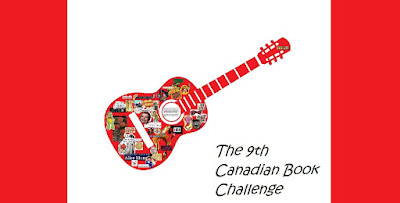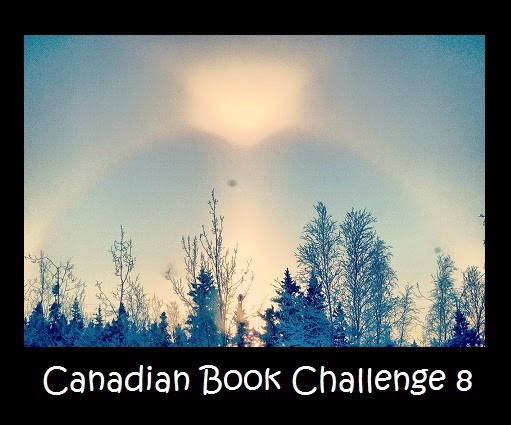 The Halloween Tree by Ray Bradbury ~ 1972. This edition: Knopf, 1972. Illustrated by Joseph Mugnaini. Hardcover. ISBN: 0-394-92409-6. 145 pages.
The Halloween Tree by Ray Bradbury ~ 1972. This edition: Knopf, 1972. Illustrated by Joseph Mugnaini. Hardcover. ISBN: 0-394-92409-6. 145 pages.
My rating: 6.5/10
Blink your eyes and a year has passed by. Weren’t we just here, on All Hallow’s Eve? And here we are again…
Last night I went out to the car and brought in the bags of Hallowe’en candy stashed in the trunk. Many years of experience have taught me the folly of allowing it into the house too early, and numerous times I have had to buy it twice. For once it is in, all bets are off, and unless I can package it up into bags intended for neighbourhood trick-or-treaters immediately, the odds are high that some wee child will get shortchanged of his or her full share of sugar.
We live at the end of a sparsely populated rural road, and no one ever makes it this far, so part of our Hallowe’en tradition since moving here twenty-some years ago has been to take our contribution to a neighbour’s place mid-way along the traditional route. For Hallowe’en in the country is a bit different than in town. No walking is involved (though one legendary year a few intrepid teens did go on horseback) – the distances are too great. Our usual route was a 15 miles round trip, with 12 houses visited, and those houses would strive to outdo each other in creativity and quantity of goodies for the “neighbour kids” who knocked on the door.
Homemade popcorn balls, full size bags of chips, cans of pop, store-bought candy by the bagful, pickles (yes, pickles – “witch’s fingers”, don’t you know?!), and pomegranate halves (“Because they just look so weird”) and just-roasted pumpkin seeds – what a glorious haul! At each house a prolonged visit, as the costumed ones are made to sing for their treats, spun around to examine their get-ups, photographed and congratulated on their creativity and sent on their way. It’s a very big deal around here, where everybody knows everybody, and usually can predict to the exact number how many children will be showing up – a phenomenal 18 (!) last year. Until our own kids passed that elusive milestone (mid-teenish) when the dress-up thrill began to pale, it was one of our family’s favourite nights of the year.
This year, after a few seasons of non-observance of the night, the now-independently-mobile (driver’s licences and a car) teens are talking of going into town to take part in a “zombie walk”, and costume makings are all over the kitchen table, so I guess they’re not too old for it after all, though the whole concept of the zombie thing leaves their parents a bit bemused. We will be joining up for a bonfire and fireworks once it gets dark, hosted by some of our in-town relations, so it promises to be an pleasurable evening.
All of this digression out of the way, I will now turn to the original purpose of this post, which is to talk a little bit about a book. Twizzlers and Rockets and a few mini Mars Bars at hand, I’m ready to go. Let’s see what my sugar-fueled morning brain can come up with to say about the book I searched out last night as an appropriate Hallowe’en read.
It was a small town by a small river and a small lake in a small northern part of a Midwest state. There wasn’t so much wilderness around you couldn’t see the town. But on the other hand there wasn’t so much town you couldn’t see and feel and touch and smell the wilderness. The town was full of trees. And dry grass and dead flowers now that autumn was here. And full of fences to walk on and sidewalks to skate on and a large ravine to tumble in and yell across. And the town was full of…
Boys.
And it was the afternoon of Halloween.
And all the houses shut against a cool wind.
And the town was full of cold sunlight.
But suddenly, the day was gone.
Night came out from under each tree and spread.
Behind the doors of all the houses there was a scurry of mouse feet, muted cries, flickerings of light.
Behind one door, Tom Skelton, aged thirteen, stopped and listened.
The wind outside nested in each tree, prowled the sidewalks in invisible treads like unseen cats.
Tom Skelton shivered. Anyone could see that the wind was a special wind this night, and the darkness took on a special feel because it was All Hallows’ Eve. Everything seemed cut from soft black velvet or gold or orange velvet. Smoke panted up out of a thousand chimneys like the plumes of funeral parades. From kitchen windows drifted two pumpkin smells: gourds being cut, pies being baked.
Tom Skelton is ready to take part in this night of nights. Playing on his fortunate last name, he’s decked himself out in bones, white stitched on black, and he’s keen to get going, as are his friends.
Wham. Eight front doors banged shut.
Eight boys made a series of beautiful leaps over flowerpots, rails, dead ferns, bushes, landing on their own dry-starched front lawns. Galloping, rushing, they seized a final sheet, adjusted a last mask, tugged at strange mushroom capos or wigs, shouting at the way the wind took them along, helped their running; glad of the wind, or cursing boy curses as masks fell off or hung sideways or stuffed up their noses with a muslin smell like a dog’s hot breath…
But wait! Shouldn’t there be nine of them? Who is missing?
One is not there, and as they run to the missing Pipkin’s house an awful foreboding forms in each boyish heart. What could be wrong?
Pipkin appears, pale and sad, moving like an old man. Not feeling well at all. But still keen to join in. “You go ahead. I’ll catch you up.”
Agreeing to rendezvous in the ravine, at the House of the Haunts (brrr!) the boys scatter into the night.
And when they get there, still no Pipkin.
…They stood at last by a crumbling wall, looking up and up and still farther up at the great tombyard top of the old house. For that’s what it seemed. The high mountain peak of the mansion was littered with what looked like black bones or iron rods, and enough chimneys to choke out smoke signals from three dozen fires on sooty hearths hidden far below in dim bowels of this monster place. With so many chimneys, the roof seemed a vast cemetery, each chimney signifying the burial place of some old god of fire or enchantress of steam, smoke, and firefly spark. Even as they watched, a kind of bleak exhalation of soot breathed up out of some four dozen flues, darkening the sky still more, and putting out some few stars.
And towering over the house, an amazing, stupendous, fabulous tree.
And it was such a tree as they had never seen in all their lives.
It stood in the middle of a vast yard behind the terribly strange house. And this tree rose up some hundred feet in the air, taller than the high roofs and full and round and well branched, and covered all over with rich assortments of red and brown and yellow autumn leaves. [And] the Tree was hung with a variety of pumpkins of every shape and size and a number of tints and hues of smoky yellow or bright orange.
“A pumpkin tree,” someone said.
“No,” said Tom.
The wind blew among the high branches and tossed their bright burdens, softly.
“A Halloween Tree,” said Tom.
And he was right.
And out of a pile of leaves below the tree arises a huge man in dark clothes, a menacing and laughing man, intoning something about “tricks Tricks TRICKS,” and before they know it the eight boys are being whisked off on a fantastical journey into the past, to glimpse the origins of Halloween, and to try to pin down the elusive Pipkin, who seem always to be just a little beyond them, a faint and ghostly presence.

I have to admit that right here, page 33, is where Ray Bradbury rather lost me. I completely bought into the nostalgic Halloween night magic of the house and the tree and the boys and the thrills of their adolescent nocturnal glories, but once their shape-shifting, darkly mysterious host materialized and whisked them off into a time travel journey, the magic thinned and the bones of the Teachable Moment shone through.
For this is a journey back to learn about the origins of Halloween, and the boys first build a kite out of a barn’s wall worth of tattered circus posters which carries them out into the night sky and beyond. The author is grandly creative in this bit, and admittedly throughout; the strength of the book is definitely in the imagery, if not in the highly contrived plot.

Off they all go to visit ancient Egypt, when the pyramids were new, and then to glimpse Night of the Souls rites in Greece and Rome. They have a seriously creepy encounter with scythe-wielding Samhain in Druidic times, watch the Romans fall the sacred groves, and the Roman golden images turn into Christian icons. A witch’s gathering attended by flying broomstick is next, merging into a visit to Notre Dame Cathedral and its fantastical gargoyles, one of which appears to be the missing Pipkin, turned to stone. Nice bit here with the wind and the rain allowing the stone creatures to speak.
Finally to the Day of the Dead in Mexico, into the graveyards and down into the Catacombs, where the eight boys are given a chance to finally save their elusive friend, but at a potentially terrible cost. Needless to say, they do the expected thing, and find themselves whisked back home, where they learn that Pipkin has indeed had a brush with death (appendicitis) but has had an operation, and has rallied wonderfully well.
Midnight strikes. All return to their homes, and the night turns quiet as the candle blames wink out on the Halloween Tree.

That felt really rushed. A whirlwind tour with too many stops.
I have mixed emotions about this short novel, this juvenile fable, this ode to youth and to the magic of an idealized Halloween.
Bradbury returns to his personal childhood world of white-picket-fence, small-town, mid-West America; his characters are those perennially adolescent boys just on the verge of the thing that comes next. Their world is ultimately clean, decent, safe and secure; the dark places are there, but there is always a refuge, and the light always triumphs in the end. Fair enough, but one can’t help but feel a bit uneasy, that there’s something missing from the scene, or maybe that there’s something more going on than we get to see. Where are the dark places in your world, dear reader, and what place of safety have you to look forward to?
Exactly.
The time travel bits are a bit too handy, a bit too contrived, a bit too screenplay-ready. Aha! And there’s the twist. This story was first conceived as just that, a screenplay for an animated movie, in 1969. That project fell through, and Bradbury dusted it off and turned it into this narrative work a few years later. This explains a lot, the abrupt switching from scene to scene, and the rushed and hyper-active speed of travel throughout. It would make a good movie, and in 1993 Bradbury helped Hanna-Barbera bring the story to the screen, winning an Emmy Award in 1994 for the project. ( I haven’t seen the 1993 film, but I am mildly curious about it now.)
An evocative juvenile novel, with interest for the adult reader in the beautifully written descriptive passages found throughout, if one can wade through the “Gee whiz!” kidspeak and the absolutely dire rhyming bits scattered throughout. (Poetry obviously is not one of Bradbury’s strengths, at least not here.) I’m not quite sure how present day youth would view this one; I suspect the dreamily imaginative ones would find much to like, but it also has a very vintage feel, perhaps too much so to appeal to the majority.
So there it is: a Halloween book review on the day itself.
Cheers, all.
Oh, and the morning candy was most tasty, but I think I’m good now for another year! 😉
Read Full Post »
 The October Country by Ray Bradbury ~ 1955. This edition: Ballantine, 1971. Paperback. 276 pages.
The October Country by Ray Bradbury ~ 1955. This edition: Ballantine, 1971. Paperback. 276 pages.












